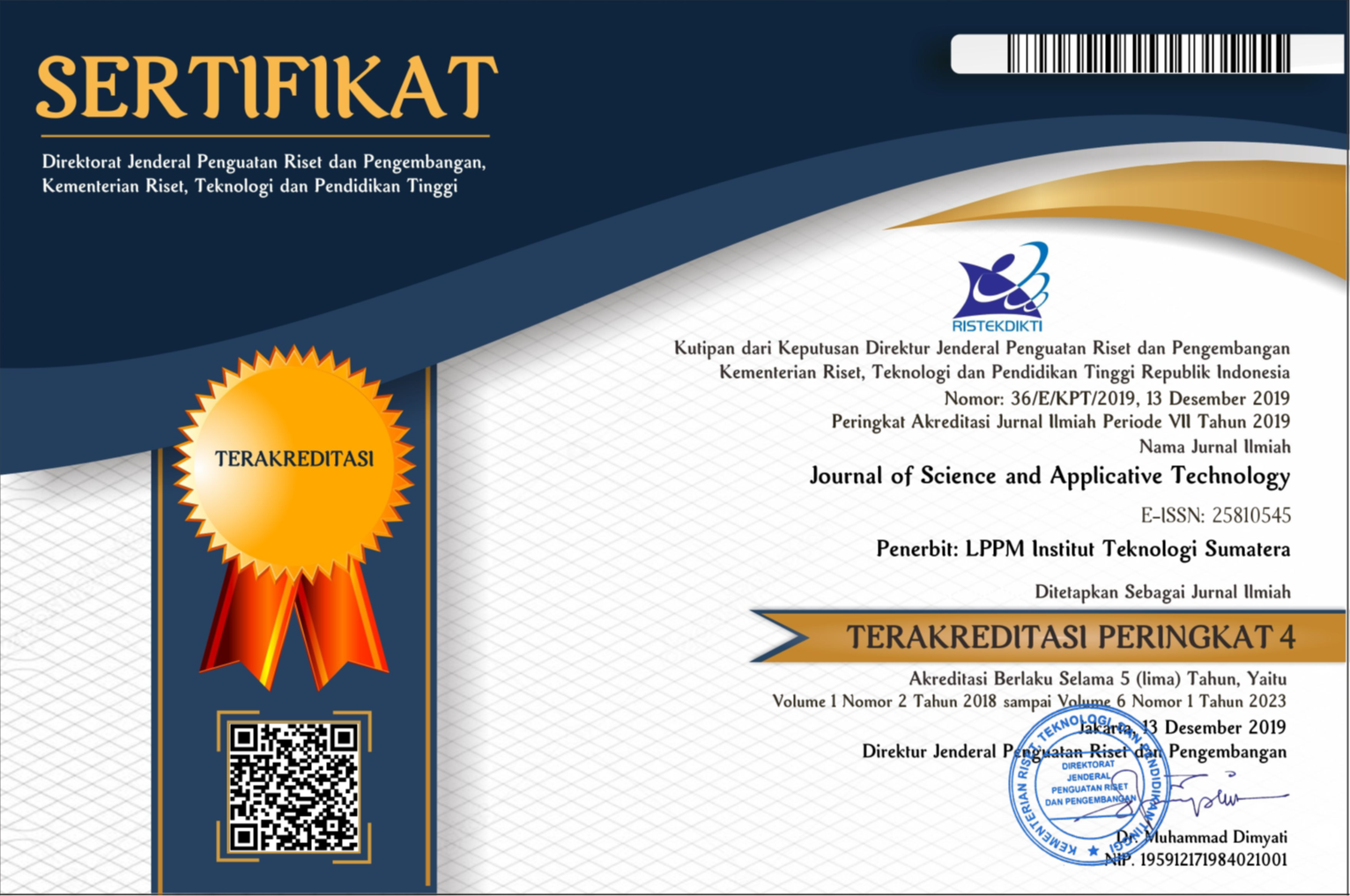Studi Dampak Penggunaan Insulasi pada Bangunan Rumah Tinggal Terhadap Konsumsi Energi Pendingin Ruangan
Abstract
The global warming issue has become a concern for environmentalists activists, including many governments. This concern is due to the increasing attention to reducing the use of fossil energy because fossil energy has significantly exacerbated global warming. To minimize the use of fossil energy, especially the housing sector that is one of the extensive energy users. Building performance's analysis is done by creating changes to the case study's building envelope material. Case study buildings were simulated in energy analysis software. Preliminary analysis shows how the performance of the case study building is still far from the standard of thermal comfort. Air conditioning (AC) usage in the room will give comfort in terms of temperature. But, even though with the AC, the humidity level of the room was still high. Two building models are then created in the software to see the performance of the building by making changes to the building envelope material. With the settings on air-conditioning (AC) and environmental conditions in both models, the results indicate differences in the building performance of the two buildings. The results show that the building with insulation are using less energy and can provide optimal comfort for building users. Comfort is not only in terms of the building's temperature but including building relative humidity. In buildings with insulation, the temperature and humidity of the building are relatively stable throughout the year.
Downloads
References
[2] ESDM-RI, ‘Handbook of Energy and Economic Statistics of Indonesia 2018’, 2018.
[3] I. Abd-Manaf, ‘Performance modelling and comparative assessment of desiccant evaporative cooling system for hot and humid climate’. 18-Jun-2020.
[4] International Energy Agency, ‘The Future of Cooling in Southeast Asia’, 2019.
[5] International Energy Agency, ‘Technology Roadmap: Energy efficent building envelopes’, 2013.
[6] A. M. Omer, ‘Renewable building energy systems and passive human comfort solutions’, Renew. Sustain. Energy Rev., vol. 12, pp. 1562–1587, 2008.
[7] Ashrae, ‘Ashrae Guide and Data Book(Fundamentals)’, Ashrae, p. 148, 2002.
[8] International Energy Agency, ‘The Future of Cooling: Opportunities for energy-efficient air conditioning Together Secure Sustainable’, 2018.
[9] T. Uno, S. Hokoi, and S. N. N. Ekasiwi, ‘Passive Cooling Strategies to Reduce the Energy Consumption of Cooling in Hot and Humid Climates in Indonesia’, in Sustainable Houses and Living in the Hot-Humid Climates of Asia, Singapore: Springer Singapore, 2018, pp. 407–418.
[10] H. Feriadi and N. H. Wong, ‘Thermal comfort for naturally ventilated houses in Indonesia’, Energy Build., vol. 36, no. 7, pp. 614–626, Jul. 2004.
[11] International Energy Agency, ‘Promoting Energy Efficiency Investments: Case studies in residential sector’, Paris, 2008.
[12] R. Andarini, H. Schranzhofer, W. Streicher, and a. K. Pratiwi, ‘Thermal simulation and cooling energy sensitivity analysis of a typical shophouse in Jakarta, Indonesia’, Build. Simul., no. January, pp. 1887–1893, 2009.
[13] M. N. F. Alfata et al., ‘Field investigation of indoor thermal environments in apartments of Surabaya, Indonesia: Potential passive cooling strategies for middle-class apartments’, in Energy Procedia, 2015, vol. 78, pp. 2947–2952.
[14] W. Sujatmiko, H. K. Dipojono, F. X. N. Soelami, and Soegijanto, ‘Natural Ventilation and Temperature Conditions in Some High-rise Building Flats in Bandung and Jakarta in Perspective of Adaptive Thermal Comfort’, Procedia Environ. Sci., vol. 28, pp. 360–369, 2015.
[15] Badan Pusat Statistic, ‘2010 Population Census - Household by Region and Floor Area of Dwelling Unit - Indonesia’, 2011. [Online]. Available: http://sp2010.bps.go.id/index.php/site/tabel?tid=333&wid=0. [Accessed: 01-Oct-2018].
Copyright (c) 2021 Journal of Science and Applicative Technology

This work is licensed under a Creative Commons Attribution-NonCommercial 4.0 International License.
All the content on Journal of Science and Applicative Technology (JSAT) may be used under the terms of the Creative Commons Attribution-NonCommercial 4.0 International License.
You are free to:
- Share - copy and redistribute the material in any medium or format
- Adapt - remix, transform, and build upon the material
Under the following terms:
- Attribution - You must give appropriate credit, provide a link to the license, and indicate if changes were made. You may do so in any reasonable manner, but not in any way that suggests the licensor endorses you or your use.
- NonCommercial - You may not use the material for commercial purposes.
- No additional restrictions - You may not apply legal terms or technological measures that legally restrict others from doing anything the license permits.





















